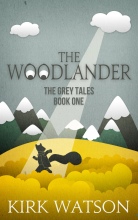Let’s talk about plotting. Not whether you should have a plot (I hope you do), but how you create it.
It seems to me there are two schools of thought. First, you have your planners. Followers of this school believe in working out the plot before they even start writing. This can be anything from a rough outline to a detailed chapter-by-chapter synopsis.
Then there’s the “make-it-up-as-you-go” school of thought. These writers start with a premise or a situation, then just start writing. The idea is that you will discover the plot as you go.
I suppose each school has its advantages and disadvantages. By plotting your novel ahead of time, you can ensure you don’t waste time wandering down dead ends. Your writing gains a certain focus– every word serves to advance the story to a common goal. I’m a big fan of tight writing, so this aspect appeals to me tremendously.
But there are disadvantages to plotting. The biggest might be paralysis by analysis. Frankly, it can be difficult to preconceive all the major twists and turns of your novel before you even start writing. You don’t really know your characters yet, so how can you predict how they would react in a given situation? All that planning can be overwhelming, perhaps preventing you from starting your novel in the first place.
This leads to the second danger of plotting: the dreaded Deus ex Machina, or God of the Machine. By having this preordained plot, you run the risk of forcing implausible solutions, or having your characters react in an unrealistic manner just to satisfy the plot. The good news is this is entirely avoidable! You just need to remind yourself that your outline is there to serve you, not the other way around. If you find yourself forcing your writing to fit your outline, don’t be afraid to alter the plot. It’s not the ten commandments, for crying out loud.
So what about the anti-plotters? These writers prefer to start with setting–a character, a place, a situation. Then you just start writing. With a little luck and a little intuition, hopefully you discover a plot worth writing.
Of course, not plotting has just as many advantages and disadvantages as plotting. Many of these are just the flip-side of plotting. Again for me, the biggest advantage of not plotting is you can just start writing. No planning, no outlines, no rules. Just write, man, just write. Can you dig it?
Another advantage is your characters will drive the story, not the other way around. Without an agenda, your characters are free to react in a realistic manner. You don’t have an itinerary to follow, so if your character feels like turning left, by all means, turn left!
The disadvantages are probably obvious. By not having a destination, you risk writing a novel that wanders aimlessly. No one likes to read a few chapters and think, “Well, that was pointless!” Of course, this is all fixable in the editing process, but it involves substantial cutting. No author likes to “kill their darlings,” so be prepared for some difficult choices.
In reality, I imagine most writers fall somewhere between these two schools. I doubt many writers plot every little detail before writing a single word. And I would be surprised if anyone writes completely in the dark with no idea where the next sentence might lead. If you do exist out there, please write me! I would find your process fascinating.
My own process leans heavily towards the “make-it-up-as-you-go” camp. When I decided to write The Woodlander, I literally had no plot. I just knew I wanted to write a novel.
So how did I start? Well, for reasons I don’t fully understand myself, I decided I wanted to write a story with talking animals. Not a happy Disney-esque story where little Jimmy learns to share. I wanted my world to be dark and gritty, a talking animal story for adults.
In my mind I pictured this dive bar built into the side of a molehill (I briefly considered calling it “Mole’s”). It’s closing time as a squirrel stumbles out. He makes it up the steps of the bar, and then…
What happens next? I had no idea. I just started writing. Fortunately the setting provided plenty of ammunition. Why is the squirrel drinking? Maybe he’s depressed, but why? Because something horrible has happened. But what?
As I wrote more and more, the characters came to life. They all had a back story. I didn’t know where they were going, but I wanted to find out.
As the squirrel stumbles from the bar, he bumps into someone. Someone big and mean. Now what?
As I continued to write, something magical happened. I discovered the plot. Or at least a vague idea of what would happen next. For me, the best feeling in writing is when I surprise myself. This was one of those times. I now found myself halfway between the plotters and the anti-plotters. I still never made an outline, but I had a direction. I had a plot.
So what’s your plotting process? Let me know, I’d love to hear it!


Pingback: The Third Time’s the Charm | thewoodlander